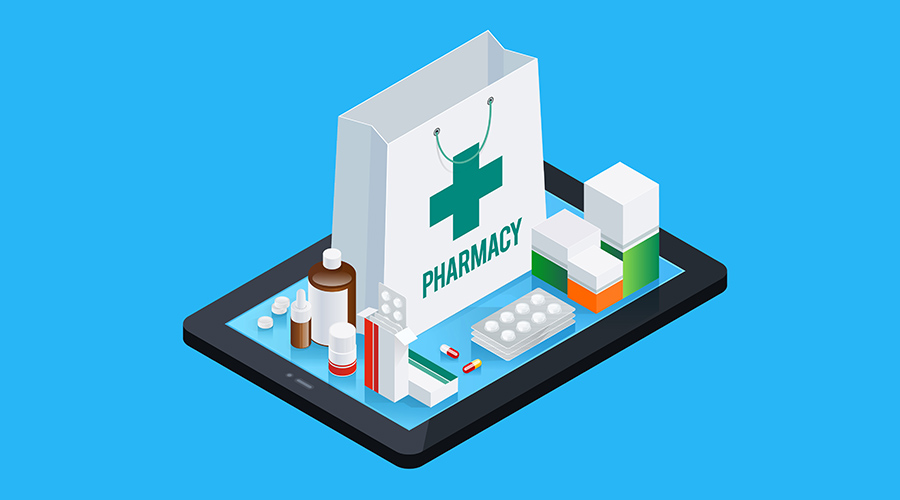
The adoption of cutting-edge technologies can play a vital role in the digital revolution of the pharmaceutical industry. While capturing that opportunity requires identifying the right initiatives. Technologies such as Artificial Intelligence, Machine Learning, AR-VR, Digital Applications, Internet of Things, Blockchain, 3D printers, Organ-on-Chips are among the innovations that are beginning to transform the pharmaceutical industry in the way they have already transformed the other sectors.
Pharmaceutical executives, as well as researchers, innovators, and legislators, are well aware of the disruptive potential and are experimenting with a wide range of digital initiatives. It is not so easy to determine which initiatives to take to expand and how, as they are still blurred to visualize what will be the digital success of ten years from now.
In this article, we will try to highlight the points where digital technology will generate more value in the pharmaceutical industry and guide companies according to the objective of creating a strategy for digital success. Here we start with some trend technologies that are already changing and will do more to reshape the pharmaceutical industry.
Using Bigdata to generate the value in the pharmaceutical Industry
In the area of health, we are seeing data from electronic medical records (EMR) gathered with genomic and genetic data, financial data, and patient-reported data to provide information on which therapies provide the greatest overall value and the lowest cost. Responsible care organizations encourage better outcomes for patients by reimbursing healthcare professionals based on results and quality measures.
Using EMR data and electronic prescription information, doctors and insurance companies can better track patient outcomes in the long term, a critical element for providers to demonstrate their performance and therefore be adequately reimbursed. Pharmaceutical companies also need to collaborate on that front and use this targeted data to improve areas such as product development, meet the needs of insurers and provide compelling evidence of the benefits of a drug. Traditionally, data is used in silos, but these new services help find opportunities to use it in several ways, freeing up much more potential.
For example, in R&D, the establishment of this methodology allows the use of data from clinical trials in simulations, which can generate discoveries with less cost and less risk. The data services allow R&D organizations to organize data from various points of sale, including contracted research organizations, academic institutions, laboratory partners, and public health institutes.
Cloud technology helps in reducing costs and improves business functions in the Pharmaceutical Industry
To date, the cloud market has mainly served as a tool for sales and marketing teams at most pharmaceutical companies. But that is changing rapidly. Today, this market is adapting to meet the needs of all areas of the life sciences and has proven to be particularly useful in overcoming IP, security issues and has enabled many companies to reduce operating costs. But it is the acronym “PaaS” that Accenture believes has the greatest applicability in the industry. “Platform as a service” is a complete, pre-integrated solution that makes it easy to deploy applications without the cost and complexity of purchasing and managing the underlying hardware, software, or hosting resources. The platform can be used to quickly develop, test, and run business applications.
AR and VR
AR-VR has a lot to contribute to the pharmaceutical industry, as companies struggle to engage doctors and research schedules turn into a whirlwind of more and more studies. With their ability to create a captivating virtual world with minute details, AR and VR are promising technologies that can meet a wide range of needs in the pharmaceutical industry.
For reference, the giant pharmaceutical organization “GSK” used an AR tool to create the migraine experience that helped to understand what a migraine patient experiences. This was an exemplary use of AR, and these applications can solve serious problems in today’s healthcare environments, such as empathy and trust. For studies of prediction of interaction between drugs and targets, AR-VR technologies can expand so far. VR can increase the efficiency of the pre-development phases of medicine, allowing scientists to better visualize interactions and thus redesign and redesign molecules according to site specifications.
Conclusion
The application of new technologies to a world such as pharmaceuticals can bring great benefits but, it is not without certain costs and challenges since investing in these things always involves an initial risk. You also have to be aware of the security problems that it can entail. Having so much data in your custody, prevention methods must be applied so that cybercriminals do not steal the information, which means investing in cybersecurity measures.
